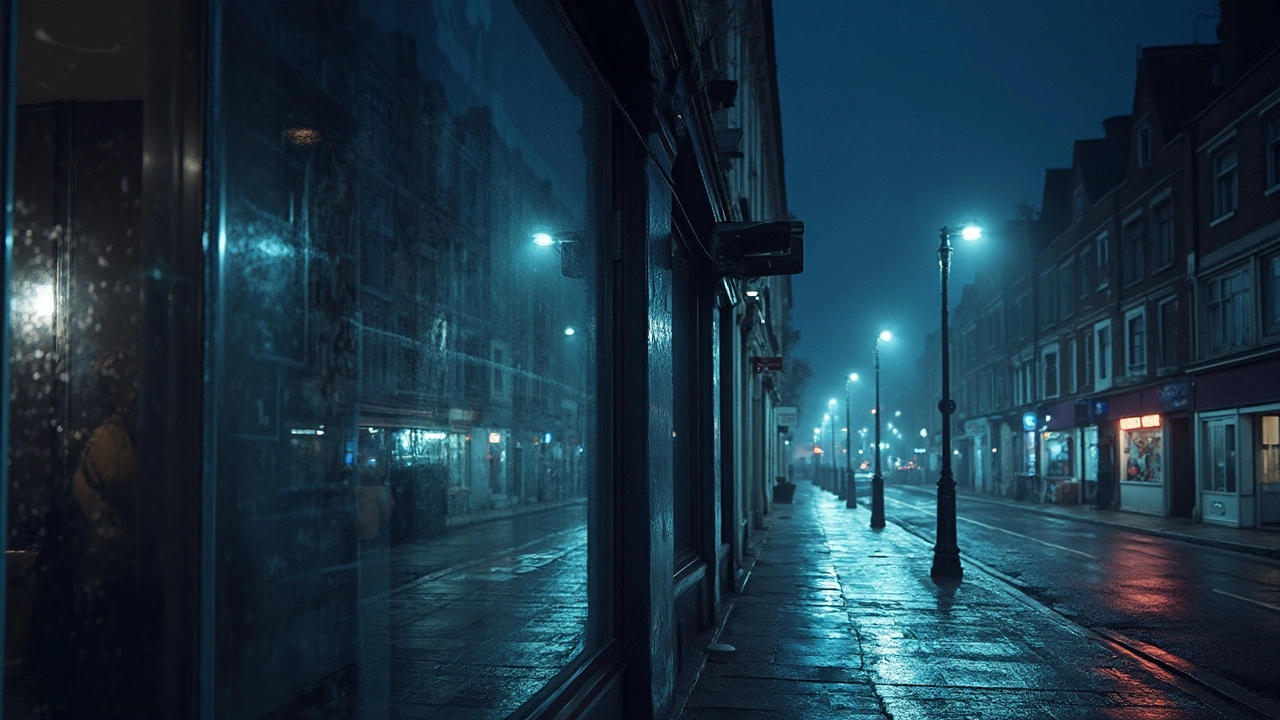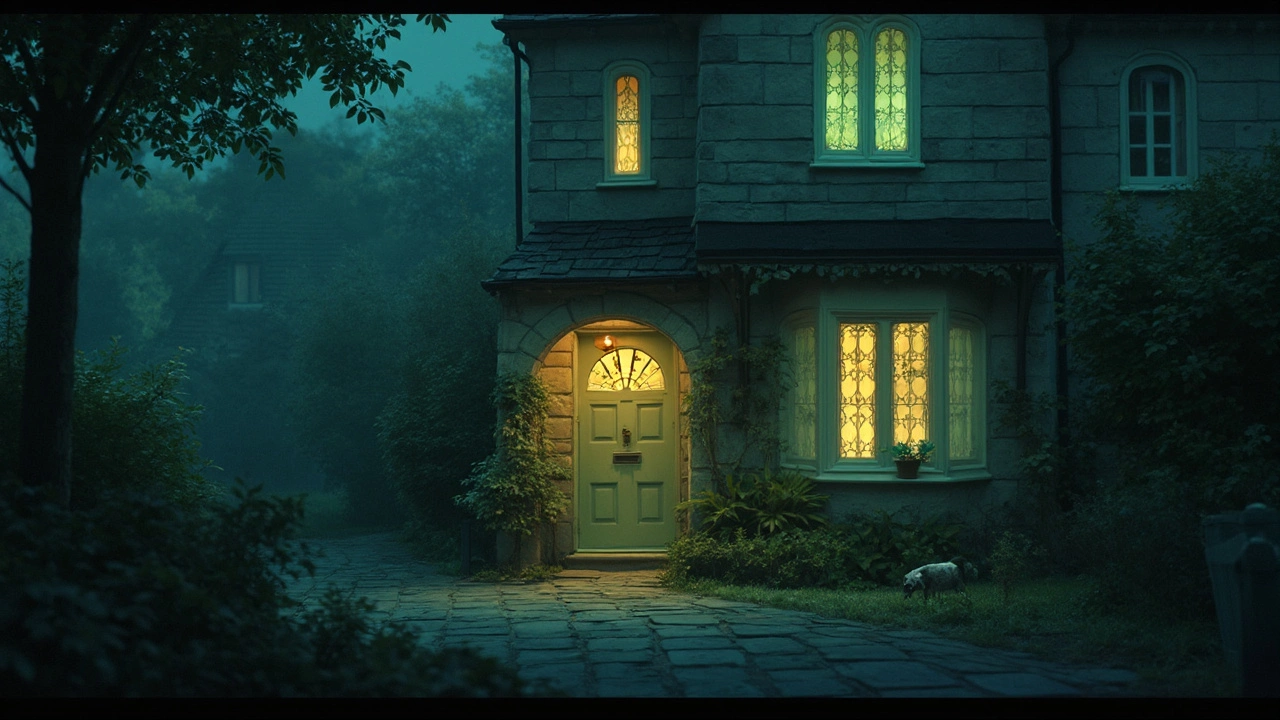So, we've all seen those TV shows with gadgets that can seemingly see through anything, but how about in real life? Specifically, can your night vision camera see through your windows? It’s a common question among folks setting up home or business security systems. The short answer is: not really, but there are some interesting nuances to unpack.
First things first, let’s talk about how night vision cameras generally work. Most use infrared technology to light up the dark, making use of invisible lights that your eyes can’t see but the camera can. This allows the camera to capture images in low light or complete darkness. But here’s the catch when it comes to glass—windows tend to reflect infrared light.
Imagine your camera is a flashlight. When you shine it on a window, the light bounces back. The same thing happens with your night vision camera. This reflection can create glare or make the image cloudy, reducing the camera's ability to capture clear footage. That’s why many people find their recordings don’t show much except glare when pointed directly through glass.
- Understanding Night Vision Technology
- The Challenges of Looking Through Glass
- Infrared Light and Windows
- Optimizing Your Night Vision Setup
Understanding Night Vision Technology
Night vision technology might sound like something out of a spy movie, but it’s pretty straightforward once you dig into it. At its core, night vision cameras enhance low-light conditions using either image enhancement or thermal imaging.
Image Enhancement
This method collects minimal existing light—such as moonlight or starlight—and amplifies it. With the help of special sensors, even the faintest amount of ambient light is intensified, allowing the camera to produce a visible image. This is why many cameras work better on clear, starry nights compared to pitch-black environments.
Infrared Technology
Then there's infrared technology, the real MVP when it comes to seeing in the dark. It involves the use of infrared light to illuminate the area. Since infrared is invisible to the human eye, it won’t disrupt your peaceful night, but your camera picks it up just fine. Most night vision cameras have a ring of little red lights around the lens; these are the infrared LEDs casting that discrete glow.
Practical Use of Infrared
Now, here's the kicker: different models offer various infrared ranges. A budget model may illuminate a small area about 10 to 15 feet around, while higher-end versions can extend up to 200 feet. Knowing the range of your camera is key to understanding what it can realistically capture.
One fun fact: according to a 2023 survey among security professionals, nearly 80% prefer infrared technology for urban areas because it doesn’t require external light sources. It’s handy, especially in places where light pollution isn’t a concern.
Future Trends
The technology keeps evolving. Companies are continuously pushing towards improved image clarity in varying conditions. Newer innovations even include AI algorithms that analyze and enhance footage in real-time, making the footage clearer and more useful even when the tech’s limitations challenge it.
The Challenges of Looking Through Glass
Night vision cameras boast incredible technology, but toss a window into the mix, and things can get a bit tricky. The reason behind this lies in the nature of infrared technology—critical for these cameras to work effectively in the dark.
Glass, which seems harmless, actually causes a lot of headaches for night vision. The core issue is reflection. When infrared light hits a window, most of it bounces back to the camera. This reflection can cause a kind of glare, making it hard for the camera to see much beyond the glass.
Reflection and Refraction
Not just reflection, but refraction too, is a culprit here. While most of the infrared light gets reflected, some gets bent or refracted. This bending alters the way the camera perceives the outside world, leading to distorted or unclear images.
IR Filters and Their Limits
Some cameras come with infrared filters trying to mitigate this issue, but they are not foolproof. These filters help by attempting to reduce glare and reflections, but if the environment outside the window is not well-lit, the footage may still come out grainy.
Practical Experience and Tips
From a practical standpoint, it’s often more effective to place the camera outside if you want night vision to work without a hitch. Yeah, it requires more effort, but you avoid obstacles like glass and reflective surfaces. Some folks also use external IR illuminators to boost the lighting, but these need careful alignment to dodge reflections.

Infrared Light and Windows
Alright, let’s get into why night vision cameras often struggle with windows. As cool as infrared tech is, it’s no match for glass. When a camera throws out those infrared rays, they can collide with the window, causing reflections and distortion. That’s why recording through glass isn't as straightforward as one might hope.
Here's the science bit: glass doesn’t just passively let light through like an open door. Instead, it reflects a lot of it back, which is great for privacy but bad for trying to capture images under the cover of night. If you’re simply testing a night vision camera indoors, and it’s facing a window, expect a lot of glare.
Why Can't It See Through Glass?
So why can’t these devices just cut through the glass like butter? It has to do with how infrared technology is designed. Specifically, these cameras emit IR light, which glass usually reflects. The camera’s sensors then pick up the reflected IR light, creating that washed-out effect on your screen.
Moreover, think of it like this: when you're standing in front of a mirror with a flashlight, what happens? That’s basically what your camera is experiencing with a window. The glass reflects the infrared light just like a mirror would.
Practical Solutions
Worry not, because there are a few nifty tricks to counter this issue. Here’s a handy list:
- Try positioning your night vision cameras outside instead of inside looking out.
- If that’s not possible, angle the camera slightly to reduce direct reflection.
- Use external infrared illuminators placed outdoors, directly lighting the area you want to capture, which can significantly improve image clarity.
In some instances, using a special anti-reflective coating might mitigate reflection issues, but it’s more of a workaround than a full fix.
In conclusion, while your camera can't turn into a superhero with X-ray vision, understanding these infrared quirks gives you a leg up when setting up your security.
Optimizing Your Night Vision Setup
Okay, you've got your night vision cameras. But what can you actually do to improve their performance when looking through windows? There are several steps you can take, so let's dive into those.
Positioning Is Key
Location, location, location! Odd angle or position can make a huge difference. Place your camera close to the windowpane without directly facing it. This helps reduce the intensity of reflected infrared light. Try aiming it slightly downward or at an angle to cut down on glare.
Avoid Internal Reflections
If you've got objects between the window and your camera, they'll throw reflections in the frame. Try keeping the area clean and clear. Also, cuffs down your home's internal lighting when you're relying on your night vision cameras—less competing light means cleaner images.
Consider External Lighting
Add extra external lighting to illuminate the outside area without overwhelming the camera's infrared. Low-powered LED lights can be your best friend here, offering a layer of light that complements the camera’s capabilities.
The External Housing Solution
For those willing to make a small investment, consider placing your night vision cameras outside. Get a weatherproof housing for extra protection against the elements and mount the camera directly for clearer security footage.
Tweak Camera Settings
Most modern cameras allow you to adjust exposure, brightness, and infrared intensity. Play around with those settings to find what works best for your specific environment. You might be surprised by how much a little tweaking can improve image clarity.
Let's throw in some handy numbers. According to a recent study, optimizing camera placement and settings could improve night vision clarity by up to 40%. Here's a quick stat breakdown:
| Adjustment | Potential Improvement |
|---|---|
| Camera Positioning | 15% |
| External Lighting | 10% |
| Settings Tweak | 15% |
By taking these steps, you're not just guessing your way through; you're turning your cameras into more effective security tools. It’s a bit of a DIY approach that can save you from potential headaches down the road.

